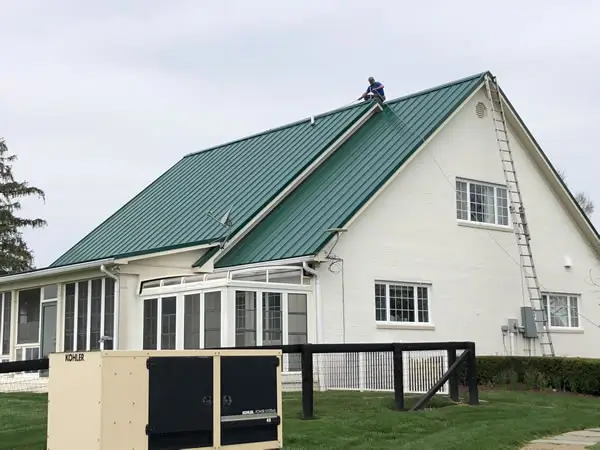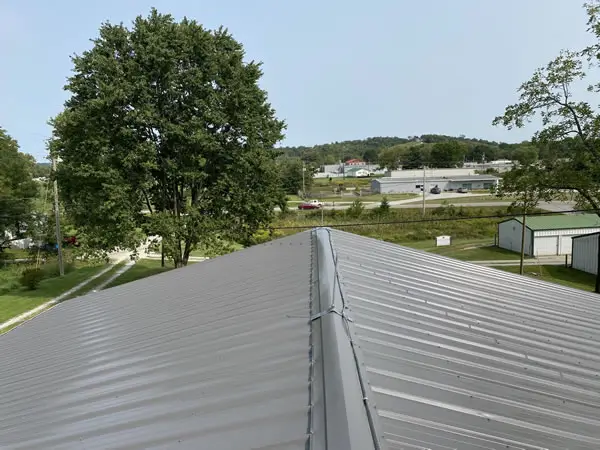Designing a Lightning Protection Systems to Safeguard Property and Occupants
Designing an effective lightning protection system requires a comprehensive approach that takes into account the specific characteristics of the structure, local regulations, and the potential risks associated with lightning strikes.
Located in Florida, Coastal Lightning Rods designs, installs, tests and maintains lightning and surge protection systems and earthing. We guarantee you that our lightning protection system design and installation on your property will meet or exceed your expectations. We follow NFPA 780 Standard for the Installation of Lightning Protection Systems. Call us today for designing a lightning protection system for your property.
Coastal Lightning Rods provides lightning protection services throughout Florida, the entire South East, the Gulf Coast and the Atlantic Coast. We also offer lightning protection in Alabama and South Carolina, Louisiana and Florida, Mississippi and Tennessee and beyond.
Steps for Designing a Lightning Protection Systems
Here is a step-by-step guide for designing a lightning protection system:
Risk Assessment:
- Identify the structure’s vulnerability to lightning strikes based on its location, height, materials, and usage.
- Evaluate the consequences of a lightning strike, considering the potential impact on occupants, equipment, and the structure itself.
Compliance with Standards:
Before designing a lightning protection system, familiarize yourself with local building codes and standards related to lightning protection. In the United States, NFPA 780 is a commonly referenced standard for lightning protection system installation.
Lightning Rod Placement
Placement of lightning rods is important when design a lightning protection system.
Install lightning rods (air terminals) on high points of the structure, ensuring that they cover the entire area to be protected. Consider the rolling sphere method to determine the placement of air terminals based on the structure’s dimensions.
Conductors and Grounding:
Use conductors with low electrical resistance (copper or aluminum) to connect lightning rods and create a continuous path to the grounding system. Install down conductors to safely route the lightning current to the ground.
Implement an effective grounding system with multiple grounding electrodes, such as ground rods or plates, to disperse the lightning energy into the earth.
Bonding:
Establish equipotential bonding by connecting all metal components of the structure, such as roof gutters, downspouts, and metal roofs. Bond the lightning protection system to the structural steel and other conductive elements to prevent potential differences.
Surge Protection Devices (SPDs):
Install surge protection devices at various points in the electrical system, including main service panels, subpanels, and individual electronic devices. Coordinate the placement of SPDs to provide comprehensive protection against transient voltage spikes.
System Testing and Inspection:
- Conduct regular inspections of the lightning protection system to ensure its integrity and functionality.
- Perform resistance measurements to verify the effectiveness of grounding and bonding components.
- Consider periodic lightning protection system testing by a qualified professional.
Documentation:
- Maintain detailed documentation of the lightning protection system design, installation, and maintenance activities.
- Include ‘as-built’ drawings that illustrate the placement of air terminals, conductors, and grounding components.
Professional Consultation for designing a lightning protection system:
- Engage with a qualified lightning protection specialist or electrical engineer to assist in the design and installation process.
- Ensure that the design meets the specific requirements of the structure and local regulations.
Education and Training:
Train building occupants and maintenance staff on lightning safety measures and the importance of maintaining the lightning protection system.
When designing a lightning protection system it is crucial you work with a knowledgeable professionals to implement an effective lightning protection system tailored to the needs of your structure.
Florida based lightning protection company Coastal Lightning Rods offers design, installation, test and maintenance of lightning and surge protection and earthing systems. We ensure you that our installation of a lightning protection system on your property will be of the highest standard. We provide lightning protection services throughout the state of Florida, entire South East, Gulf Coast and Atlantic Coast. We also provide lightning protection in Alabama, South Carolina, Louisiana, Florida, Mississippi, Tennessee and beyond.


